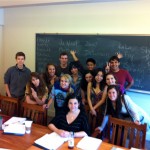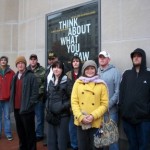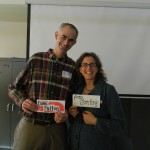Becoming a Holocaust Educator
Forums › 2023 Summer Seminar › Becoming a Holocaust Educator 2023 Summer Seminar Responses: due JUNE 18 (or earlier) › Becoming a Holocaust Educator
-
AuthorPosts
-
-
June 16, 2023 at 4:17 pm #31862
While reading Becoming a Holocaust Educator, I realized many educators face similar challenges in the classroom. As a new teacher, it is so easy to feel alone with what I am teaching, so I am grateful for the opportunity to read the experiences of others. The importance eaching with best practices versus best intentions is something that really stood out to me.
It is important to draw a connection between our students and their history after learning about the Holocaust, such as those of the Blackfeet Reservation as Brenda Johnston mentioned in Chapter 2. Having her students write “from multiple perspectives in order to understand how culture, values, and implicit bias shape our perspective on the world” (39), Johnston has her students develop a deep understanding of the past that lasts beyond the school year.
Corey Harbaugh in Chapter 4 underlined what I believe most teachers are currently leaning toward: student-centered learning. Student-centered learning, in addition to inquiry based learning, helps students draw their own conclusions, “conclusions that are more durable than ones generated for them by the teachers” (52). I want my students to guide their own learning and often ask myself if I am ensuring they have all the materials they need in order to do so.
Activating students’ empathy is a prominent theme throughout the text. Many of my students struggled with expressing empathy towards their classmates, similar to the beginning of Chapter 9 by Wendy Warren. I was intrigued by Warren’s students and their self-awareness. They were aware of the treatment of people around them, yet it was watching Irving Roth’s video testimony an Warren’s guidance that seemed to lead them to share compassion and empathy.
Additionally, the concept of “safely in, safely out” (126) from Sue Fletcher’s Chapter 11 emphasized the importance of not traumatizing or desensitizing learners. Trying to educate our students while keeping them safe and staying true to each story compels us as educators to be purposeful in our actions. These actions will go on to motivate our students who can use their empathy “envision themselves as agents of change, rather than just as consumers of information” (130).
Lastly, it was great to read about all of the different types of projects students created in Part III: Effecting Student Response. Project based learning can lead students to discover information on a subject that is meaningful to them and express this new knowledge in a way that matters through them, such as in the multi-media collaborations with other subject area teachers that were brought up in Michelle Pledger’s Chapter 13.
-
-
AuthorPosts
- You must be logged in to reply to this topic.
Recent Replies
Recently Active
-
Active 14 hours, 30 minutes ago
-
Active 1 day, 14 hours ago
-
Active 1 day, 17 hours ago
-
Active 2 days, 10 hours ago
-
Active 1 week ago
- View All Members






